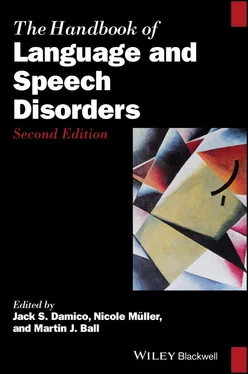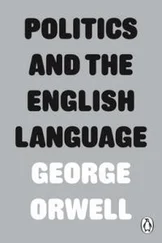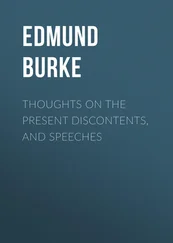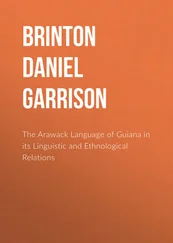The authors are grateful to Michel Hohen and John Drummond Morris for their comments on sections of the chapter, and to Diane Lazard for permission to reproduce Figure 3.2.
1 Barker, D. H., Quittner, A. L., Fink, N. E., Eisenberg, L. S., Tobey, E. A., Niparko, J. K., & Team, C. I. (2009). Predicting behavior problems in deaf and hearing children: The influences of language, attention, and parent–child communication. Development and Psychopathology, 21(2), 373–392.
2 Baudonck, N., Van Lierde, K., Dhooge, I., & Corthals, P. (2011). A comparison of vowel productions in prelingually deaf children using cochlear implants, severe hearing‐impaired children using conventional hearing aids and normal‐hearing children. Folia Phoniatrica et Logopaedica, 63(3), 154–160.
3 Bergeson, T., & Chin, S. (2008). Prosodic utterance production. Unpublished manuscript, Indiana University School of Medicine.
4 Blamey, P., Arndt, P., Bergeron, F., Bredberg, G., Brimacombe, J., Facer, G., … Whitford, L. (1996). Factors affecting auditory performance of postlinguistically deaf adults using cochlear implants. Audiology & Neuro‐Otology, 1(5), 293–306.
5 Blamey, P., Artieres, F., Başkent, D., Bergeron, F., Beynon, A., Burke, E., … Gallégo, S. (2013). Factors affecting auditory performance of postlinguistically deaf adults using cochlear implants: An update with 2251 patients. Audiology and Neurotology, 18(1), 36–47.
6 Blamey, P. J., Maat, B., Baskent, D., Mawman, D., Burke, E., Dillier, N., … Lazard, D. S. (2015). A retrospective multicenter study comparing speech perception outcomes for bilateral implantation and bimodal rehabilitation. Ear and Hearing, 36(4), 408–416.
7 Boonen, N., Kloots, H., & Gillis, S. (2019). Identificeerbaarheid van kinderen met een gehoorbeperking: Een vergelijkende benadering. Dutch Journal of Applied Linguistics. https://doi.org/10.1075/dujal.18017.boo
8 Boons, T., De Raeve, L., Langereis, M., Peeraer, L., Wouters, J., & van Wieringen, A. (2013). Expressive vocabulary, morphology, syntax and narrative skills in profoundly deaf children after early cochlear implantation. Research in Developmental Disabilities, 34(6), 2008–2022.
9 Caselli, M. C., Rinaldi, P., Varuzza, C., Giuliani, A., & Burdo, S. (2012). Cochlear implant in the second year of life: Lexical and grammatical outcomes. Journal of Speech, Language, and Hearing Research, 55(2), 382–394.
10 Chatterjee, M., Christensen, J. A., Kulkarni, A. M., Deroche, M. L., Damm, S. A., Bosen, A. K., … Limb, C. J. (2016). Voice emotion communication by listeners with cochlear implants. Poster 740 presented at 39th Annual Midwinter Meeting of the Association for Research in Otolaryngology, February 20–24, 2016, San Diego, California.
11 Chatterjee, M., Kulkarni, A. M., Siddiqui, R. M., Christensen, J. A., Hozan, M., Sis, J. L., & Damm, S. A. (2019). Acoustics of emotional prosody produced by prelingually deaf children with cochlear implants. Frontiers in Psychology, 10, 2190.
12 Chin, S. B., Bergeson, T. R., & Phan, J. (2012). Speech intelligibility and prosody production in children with cochlear implants. Journal of Communication Disorders, 45(5), 355–366.
13 Colletti, L., Shannon, R., & Colletti, V. (2012). Auditory brainstem implants for neurofibromatosis type 2. Current Opinion in Otolaryngology & Head and Neck Surgery, 20(5), 353–357.
14 Cosetti, M. K., & Waltzman, S. B. (2012). Outcomes in cochlear implantation: Variables affecting performance in adults and children. Otolaryngologic Clinics of North America, 45(1), 155–171.
15 Cupples, L., Ching, T. Y., Button, L., Seeto, M., Zhang, V., Whitfield, J., … Marnane, V. (2018). Spoken language and everyday functioning in 5‐year‐old children using hearing aids or cochlear implants. International Journal of Audiology, 57(suppl. 2), S55–S69.
16 Cysneiros, H. R. S., Leal, M. d. C., Lucena, J. A., & Muniz, L. F. (2016). Relationship between auditory perception and vocal production in cochlear implantees: A systematic review. CoDAS, 28(5). doi:10.1590/2317‐1782/20162015165
17 Dawes, P., Fortnum, H., Moore, D. R., Emsley, R., Norman, P., Cruickshanks, K., … Munro, K. (2014). Hearing in middle age: A population snapshot of 40‐ to 69‐year olds in the United Kingdom. Ear and Hearing, 35(3), 44–51.
18 de Hoog, B. E., Langereis, M. C., van Weerdenburg, M., Keuning, J., Knoors, H., & Verhoeven, L. (2016). Auditory and verbal memory predictors of spoken language skills in children with cochlear implants. Research in Developmental Disabilities, 57, 112–124.
19 Evans, M. K., & Deliyski, D. D. (2007). Acoustic voice analysis of prelingually deaf adults before and after cochlear implantation. Journal of Voice, 21(6), 669–682.
20 Fortunato‐Tavares, T., Befi‐Lopes, D., Bento, R. F., & de Andrade, C. R. F. (2012). Children with cochlear implants: Communication skills and quality of life. Brazilian Journal of Otorhinolaryngology, 78(1), 15–25.
21 Freeman, V., Pisoni, D. B., Kronenberger, W. G., & Castellanos, I. (2017). Speech intelligibility and psychosocial functioning in deaf children and teens with cochlear implants. The Journal of Deaf Studies and Deaf Education, 22(3), 278–289.
22 Friesen, L. M., Shannon, R. V., Baskent, D., & Wang, X. (2001). Speech recognition in noise as a function of the number of spectral channels: Comparison of acoustic hearing and cochlear implants. Journal of the Acoustical Society of America, 110(2), 1150–1163.
23 Gilbers, S., Fuller, C., Gilbers, D., Broersma, M., Goudbeek, M., Free, R., & Baskent, D. (2015). Normal‐hearing listeners’ and cochlear implant users’ perception of pitch cues in emotional speech. Iperception, 6(5). doi:10.1177/0301006615599139
24 Gillis, S. (2018). Speech and language in congenitally deaf children with a cochlear implant. In A. Bar‐On & D. Ravid (Eds.), Handbook of communication disorders: Theoretical, empirical, and applied linguistic perspectives (pp. 765–792). Berlin, Germany: De Gruyter.
25 Goffi‐Gomez, M. V. S., Magalhães, A. T., Brito Neto, R., Tsuji, R. K., de Gomes, M., Q. T., & Bento, R. F. (2012). Auditory brainstem implant outcomes and MAP parameters: Report of experiences in adults and children. International Journal of Pediatric Otorhinolaryngology, 76(2), 257–264.
26 Göthberg, H., Rosenhall, U., Tengstrand, T., Rydberg Sterner, T., Wetterberg, H., Zettergren, A., … Sadeghi, A. (2019). Cross‐sectional assessment of hearing acuity of an unscreened 85‐year‐old cohort—Including a 10‐year longitudinal study of a sub‐sample. Hearing Research, 382, 107797.
27 Guenther, F. H. (2006). Cortical interactions underlying the production of speech sounds. Journal of Communication Disorders, 39(5), 350–365.
28 Hirsh, I. J., Davis, H., Silverman, S. R., Reynolds, E. G., Eldert, E., & Benson, R. W. (1952). Development of materials for speech audiometry. Journal of Speech and Hearing Disorders, 17(3), 321–337.
29 Hoffmann‐Dilloway, E. (2016). Signing and belonging in Nepal. Washington, DC: Gallaudet University Press.
30 Holden, L. K., Finley, C. C., Firszt, J. B., Holden, T. A., Brenner, C., Potts, L. G., … Heydebrand, G. (2013). Factors affecting open‐set word recognition in adults with cochlear implants. Ear and Hearing, 34(3), 342.
31 Holt, C. M., Yuen, I., & Demuth, K. (2017). Discourse strategies and the production of prosody by prelingually deaf adolescent cochlear implant users. Ear and Hearing, 38(2), e101–e108.
32 Hu, B. (2012). Noise‐induced structural damage to the cochlea. In C. G. Le Prell, D. Henderson, R. R. Fay, & A. N. Popper (Eds.), Noise‐induced hearing loss: Scientific advances (pp. 57–86). New York, NY: Springer.
Читать дальше












